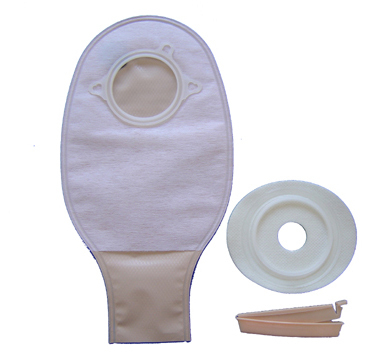Colostomy & Colostomy
Bags
Driven by an aging global
population, increasing life expectancy, and rising incidence of
incontinence diseases, the global market for ostomy and incontinence products
market is forecast to reach US$15.7 billion by the year 2017. Rising incidence
of incontinence, diseases such as bowel cancer, diseased colons, and other
ailments are necessitating surgery, which in turn are generating demand for
ostomy supplies. India is the second largest market for ostomy products in the
world after China.
Colostomy is really a way to treat numerous
disorders from the large intestine, which includes cancer, obstruction,
inflammatory bowel disease, ruptured diverticulum, ischemia or traumatic injury.
Although colorectal cancer is easily the most common indication for any
permanent colostomy, no more than 10%-15% of patients with this particular
diagnosis need a colostomy.

A colostomy is a surgical procedure in which a stoma
is formed by drawing the healthy end of the large intestine or colon through
anincision in the anterior abdominal wall and suturing it into place. This
opening, in conjunction with the attached stoma appliance, provides an
alternative channel for feces to leave the body. It may be reversible or
irreversible depending on the circumstances.
During the natural function of the colon, waste is
slowly pushed along the entire length as water is absorbed ending in the rectum
and excreted through the anus. Due to the sphincter muscle at the end of the
line, which acts as a valve, excretion is normally able to be controlled by the
individual. Because the procedure takes this out of the equation, there is no
longer any way to control the excretion of waste. There is no shut off valve,
waste will simply exit the opening in the stoma without one being able to
control it, so some sort of pouch to capture the fecal matter will be necessary.
Indications
There are many reasons for this procedure.
Some common reasons are:
A section of the colon has been removed,
A portion of the colon (or large intestine) has been operated upon and needs
to be rested until it is healed.

Options
Placement of the stoma on the abdomen can occur at
any location along the colon, but the most common placement is on the lower left
side near the sigmoid where a majority of colon cancers occur. Other locations
include the ascending, transverse, and descending sections of the colon.[1]
Colostomy surgery that is pre-planned usually has a higher rate of long-term
success than surgery performed in an emergency situation.
Colostomies are not viewed positively due to the
misconception that it is difficult to hide the pouch and the smell of
faeces, or to keep the pouch securely attached. However, modern colostomy
pouches are welldesigned, odour-proof, and allow stoma patients to continue
normal activities. Latex-free tape is available for ensuring a secure
attachment. People with colostomies must wear an ostomy pouching system to
collect intestinal waste. Ordinarily the pouch must be emptied or changed a
couple of times a day depending on the frequency of activity; in general the
further from the anus (i.e., the further up the intestinal tract) the ostomy
is located the greater the output and more frequent the need to empty or change
the pouch.
A good pouching system should be:
Secure, with a good leak-proof seal that lasts for
up to 3 days
Odor-resistant
Protective of the skin around the stoma
Nearly invisible when covered with clothing
Easy to put on and take off
Types of pouching systems
Pouches come in many styles and sizes, but they all
do the same job they collect stool drainage that comes out of the stoma. Some
can be opened at the bottom for easy emptying. Others are closed and taken off
when they are full. Still others allow the adhesive skin barrier, also called
the face plate or flange, to stay on the body while the pouch may be taken off,
washed out, and reused.
Pouches are made from odor-resistant materials and
vary in cost. Pouches are either clear or opaque and come in different lengths.
There are 2 main types of systems available. Both
kinds include an adhesive part that sticks to your skin (called a faceplate,
flange, skin barrier, or wafer) and a collection pouch.
One-piece pouches are attached to the skin barrier
Two-piece systems are made up of a skin barrier
and a pouch that can be taken off and put back on the barrier.
The skin barrier or faceplate of the pouch may need
a hole cut out for the stoma, or it may be sized and pre-cut. It is designed to
protect the skin from the stoma output and to be as gentle to the skin as
possible. |